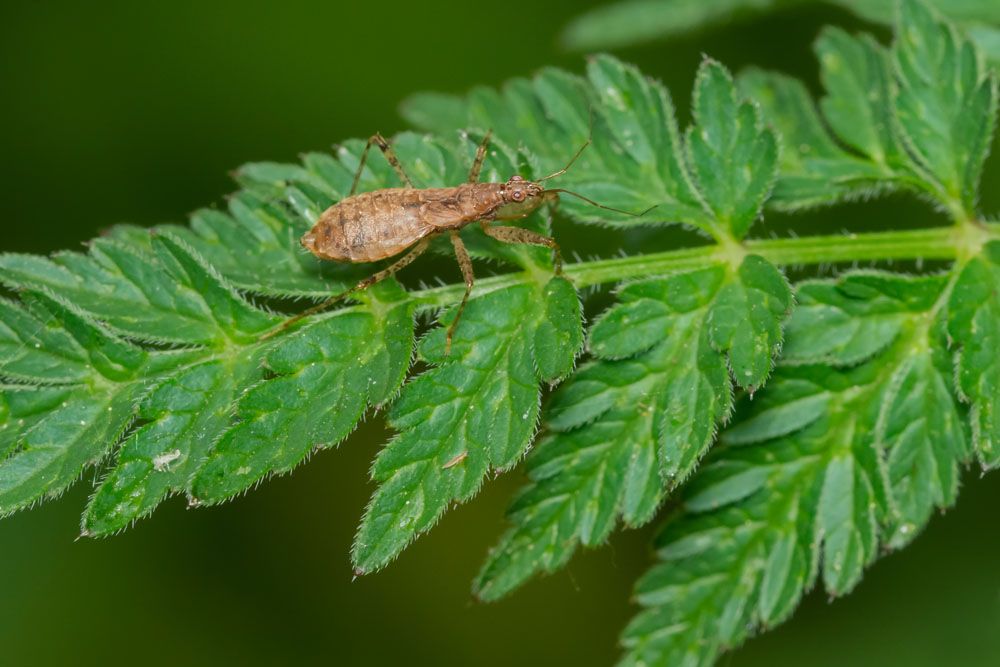
Damsel Bugs – Nabidae
Damsel Bugs
Family: Nabidae
Common Name: Damsel Bugs, Nabid Bugs.
Appearance: Damsel bugs are 4-13 mm long, having dark brown to reddish-brown, slender bodies. The body is tapered towards the head and has a pair of 4 segmented antennae. They have long legs, with front legs being thickened from the femur. The beak is hinged backward between the front legs. The nymphs and adults are quite similar; just wings are lacking in nymph stages.
Host Plants or Food: Aphids, Beetles, Small caterpillars, Spider mites, Treehoppers, Leafhoppers, eggs, and larvae of other insects.
Territory: Throughout North America (Mainly in Southeast US)
Mode of Damage: They prey on different plant pests, so they are considered Beneficial Garden Insect
Habits and Life History:
Damsel bugs are mostly seen in orchards, gardens, field crops, and landscapes where they can find their prey.
Damsel bugs have three life stages: Eggs, Nymphs, and Adults.
Adult overwinters under leave litter or crops such as alfalfa or other grain crops. Female lays eggs on plants that hatch into nymphs.
Nymphs develop through five instars and finally mature into adult damsel bugs.
They are mostly active from mid-June to mid-August.
Egg to adult development time is 1-2 months, and they produce 2 or more generations in a year.
